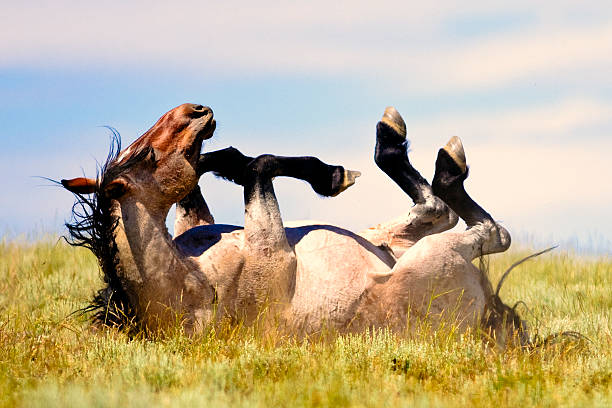One horse might be seen squirming on the ground, its legs flailing midair as you drive past the horse. You can also unwrap your horse and place it in its paddock. The horse might lie on the ground and scrub its sides and back. You are witnessing horses rolling naturally in either of these situations. Horses move for many reasons.
Horse behavior that is natural and healthy
Your horse may have a roll after you’ve ridden it. This could relieve irritation from sweat or tack. It’s similar to how you scratch after taking off socks with elastics or tight pants. After being ridden, tight muscles and stress may be relieved by rolling. Horses can also move to scratch their skin. Horses will also roll to reduce itching from insect bites, residue shampoo, grooming products, or sweating under a blanket or in the sun. Some believe that a roll in sand, mud or other grit provides some protection against sunburns and biting insects.
It can be frustrating when your horse finds the nearest spot of sand after you have given them a good grooming. Sometimes, grooming or bathing can affect the skin of your horse. Rolling is a way to restore normalcy.
It’s contagious
Rolling can often appear contagious. A horse that sees another horse rolling will often copy their behavior. Rolling is similar to a horse giving itself a massage. Because it feels good, horses will find a sandy spot that they can roll in together. You might find a hollow, bare spot in a field that is a favorite place to roll.
Do you want to dye your hair?
Rolling helps to loosen hair in spring when horses shed their thick wintercoats. If the temperature suddenly rises, horses may feel damp and sweaty. Your horse might be sweating underneath its warm coat. Rolling can help relieve itchy, sweaty feelings and remove excess hair. Rolling can also dry horses’ skin. This is why it will do so after a shower or bath.
If you roll, it indicates a problem
Rolling is a normal, healthy behavior for horses. However, there are some situations when rolling could be a problem.
Your horse shouldn’t try to roll when you are riding him. Horses may try to roll when being ridden. This could be because they feel uncomfortable. Rolling can also be a way for horses to resist work. Your tack should be checked for any pinching or poking of the horse if your horse suddenly attempts to roll. You may be feeling muscle soreness when your horse is being ridden. This type of problem can often be solved by an horse chiropractor. For horses that are rolling and trying to escape work, a re-schooling session with a rider who can recognize the signs the horse is trying to roll is necessary.
Colic can be a symptom
Rolling is also a sign of colic. It is easy to identify a healthy, normal roll by watching how your horse moves when it stands up. If your horse is enjoying rolling, it might circle several times before it gets down and rolls on the opposite side. Then, it will get back up and roll again. Healthy horses are more likely to stay in their stalls than roll.
A horse suffering from colic will roll when it is tired. It may fall down suddenly and roll violently. Then, it will stand still for a while, without any invigorating shake. The horse may attempt to roll in its stall and may do so multiple times. Horses that have been rolling in their stall for a while may look disheveled and sweaty.
Rolling can cause twists in your gut, which can lead to colic symptoms. Some believe that the twist must have occurred before the horse develops colic symptoms such as rolling. However, regardless of whether rolling causes twists or not, horses with colic torsion need to be stopped from rolling. It expends energy and can cause severe injuries to the horse or those handling it.

